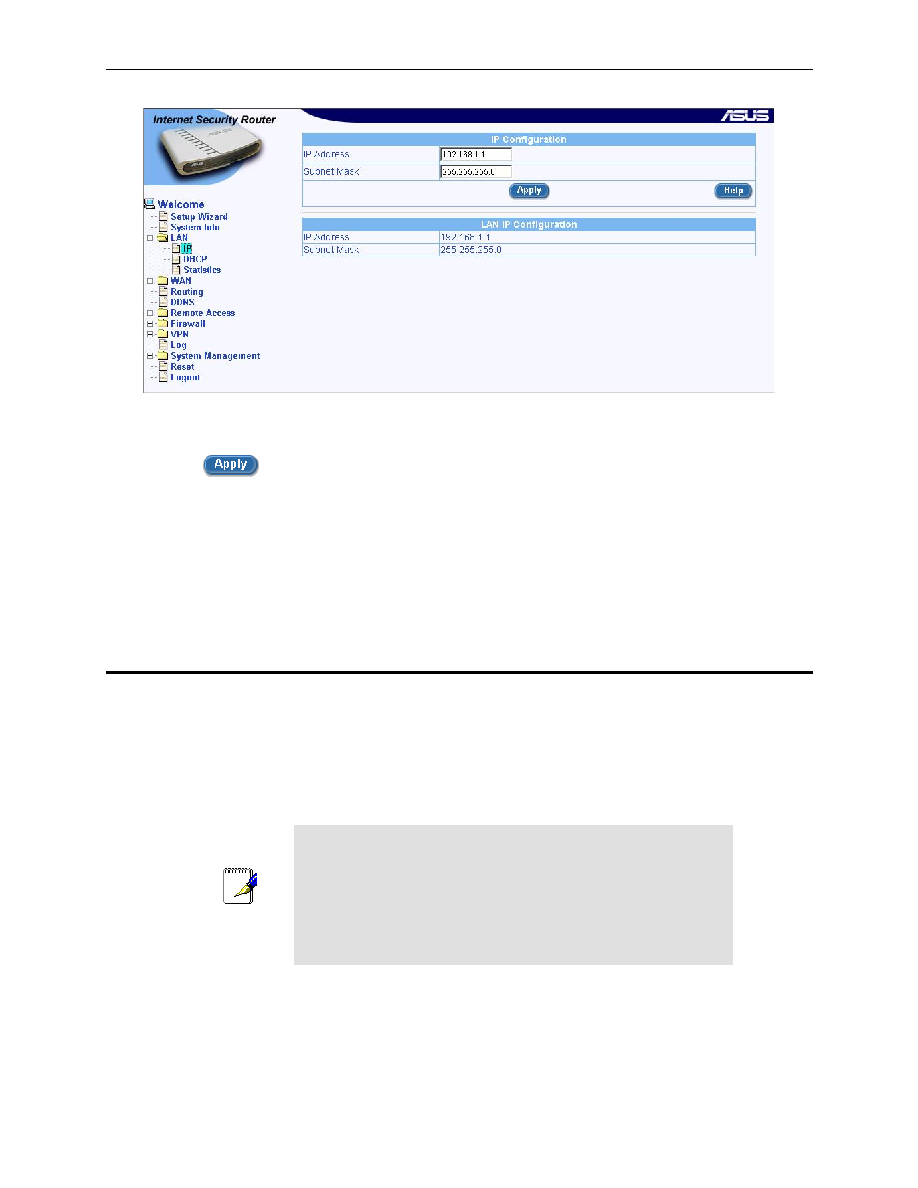
Chapter 5. Configuring LAN Settings
Internet Security Router User
’s Manual
26
Figure 5.1. LAN IP Address Configuration Page
2.
Enter a LAN IP address and subnet mask for the Internet Security Router in the space provided.
3.
Click.
to save the LAN IP address.
If you were using an Ethernet connection for the current session, and changed the IP address, the
connection will be terminated.
4.
Reconfigure your PCs, if necessary, so that their IP addresses place them in the same subnet as
the new IP address of the LAN port. See the Quick Start Guide chapter,
“Part 2 — Configuring
Your Computers,
” for instructions.
5.
Log into Configuration Manager by typing the new IP address in your Web browser
’s
address/location box.
5.2
DHCP (Dynamic Host Control Protocol)
5.2.1
What is DHCP?
DHCP is a protocol that enables network administrators to centrally manage the assignment and distribution of
IP information to computers on a network.
When you enable DHCP on a network, you allow a device
— such as the Internet Security Router — to assign
temporary IP addresses to your computers whenever they connect to your network. The assigning device is
called a DHCP server, and the receiving device is a DHCP client.
Note
If you followed the Quick Start Guide instructions, you either
configured each LAN PC with an IP address, or you specified that
it will receive IP information dynamically (automatically). If you
chose to have the information assigned dynamically, then you
configured your PCs as DHCP clients that will accept IP
addresses assigned from a DCHP server such as the Internet
Security Router.
The DHCP server draws from a defined pool of IP addresses and
“leases” them for a specified amount of time
to your computers when they request an Internet session. It monitors, collects, and redistributes the addresses
as needed.

